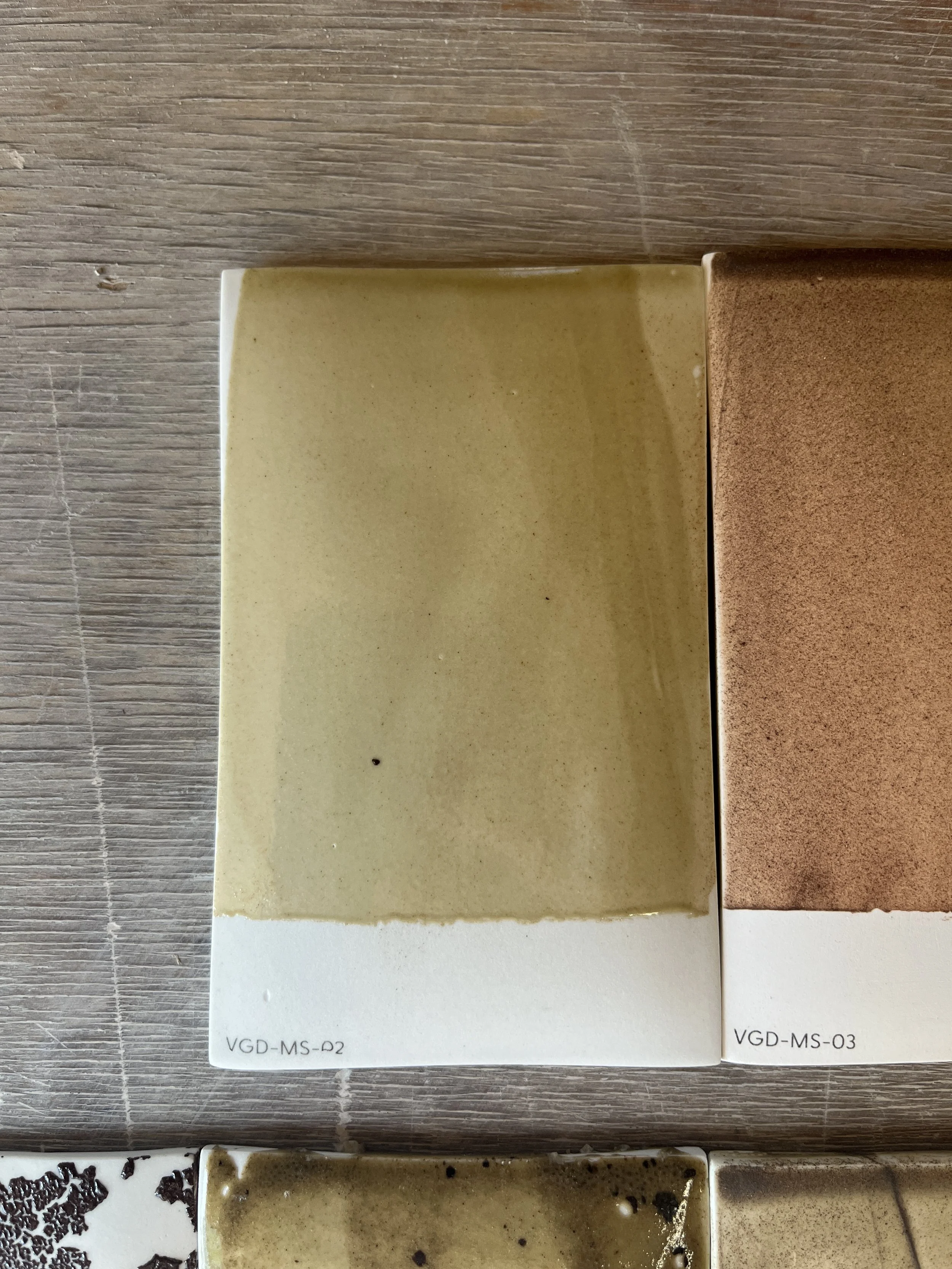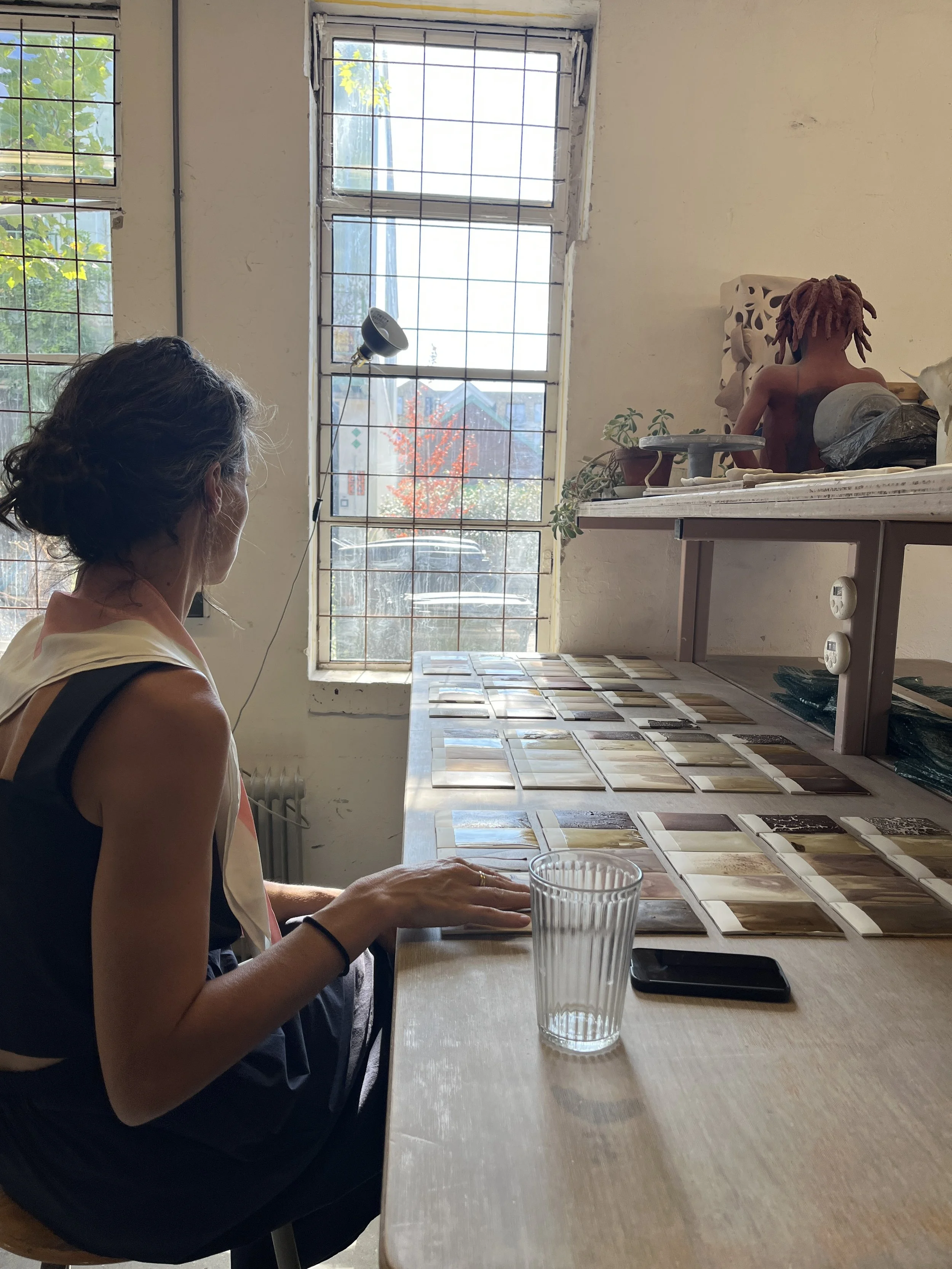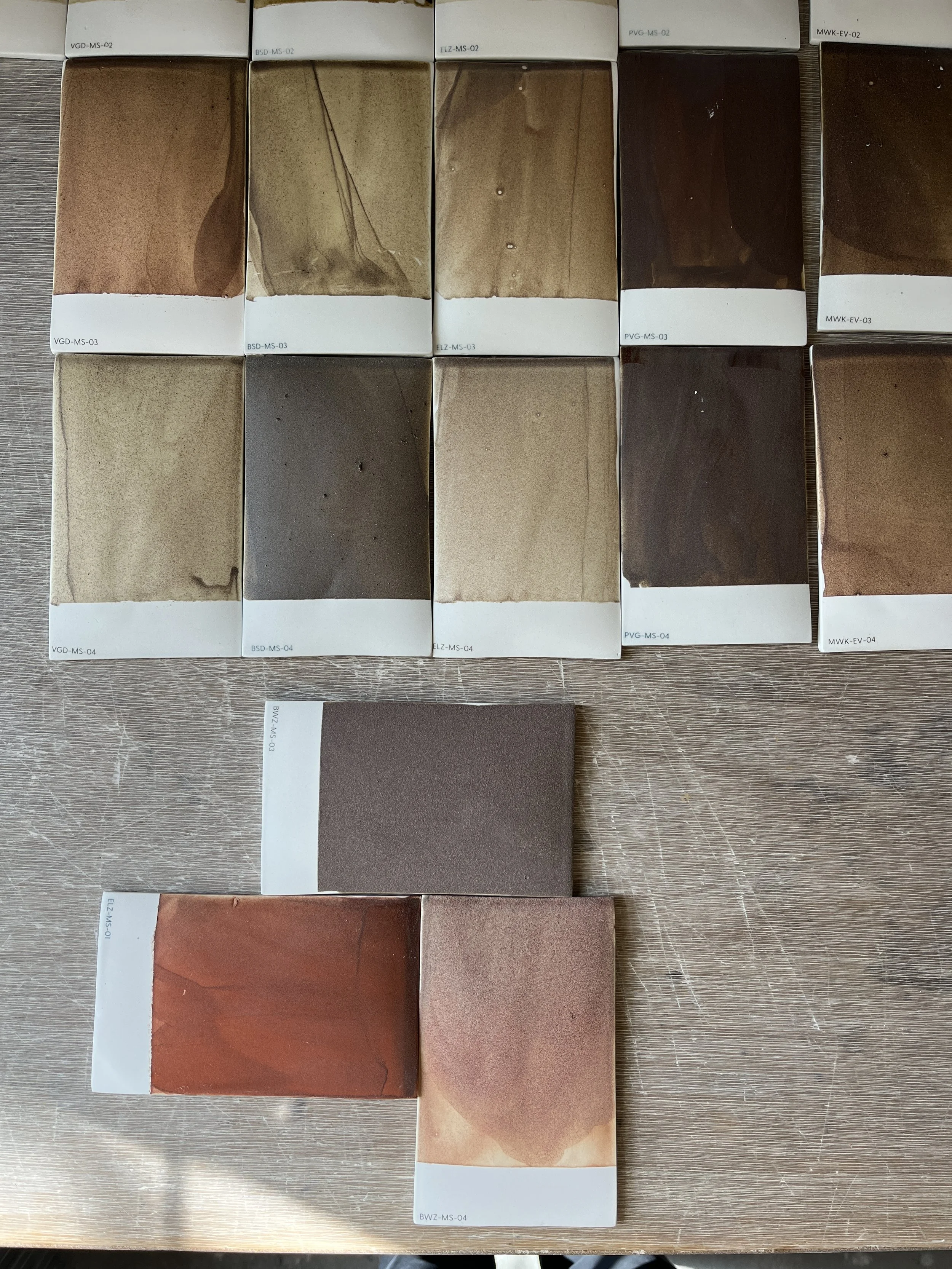Participation design / 100 Tiles of Noord
As part of the architectural research project, “Ons Huis: de toekomst van het Buurthuis”, Studio Locus has organised a series of workshops. These workshops are carried out at each location of the exhibition, which travels through Amsterdam Noord between October 2024-October 2025. They aim to investigate, together with local inhabitants, how architecture can actively build connections between people and empower communities.
We interviewed managers and organized creative workshops where residents engaged in hands-on work while conversing with one another. As a unifying material, we used local wild clay—literally the soil of Noord. The clay deposits in Noord are striking and more accessible than in other districts, due to the historically low density of development. During walks, groups collected clay from twenty neighborhoods, guided by maps of the deposits.
Material researcher and ceramicist Kirstie van Noort then guided us in transforming this clay into clay paint and, ultimately, into the Tiles of Noord. Kirstie explores how natural raw materials can be used sustainably and often gives new value to forgotten or lost materials. By collaborating with her, we brought this craft back into the neighborhood, gave the soil a voice, and demonstrated how material can tell stories.
From two workshops per community center, we created 100 tiles representing twenty neighborhoods. The result is both a periodic tableau of potential building materials and collective aesthetics, and an artwork symbolizing the collective ambitions of the community center: locally innovative, collectively strong, and sustainable. The tiles function as both material and metaphor: each community center remains rooted in its own neighborhood while together forming a larger network. Based on the tiles, we developed fictional interventions showing how the four community centers could strengthen their identity and establish reciprocal connections.
Community Centers in Noord Today
Amsterdam-Noord has more community and club houses than other districts, partly due to a lack of social facilities and strong working-class communities. Over time, these places have acquired various names, such as Buurtkamer, Huis van de Wijk, Broedplaats, Buurthub, and Jeugdhonk. On the green meeting table, you can find an overview of the types, while the yellow timeline shows their development in social, economic, and political contexts.
Over the past year, our exhibition traveled through four community centers at different stages of transformation: Modestraat, Buurthuis de Bol, Huis van de Wijk De Evenaar, and the Rietwerker. Fifteen colorful banners celebrated the history of each center, and ten initiatives were highlighted through the eyes of their leaders and managers. These leaders are crucial: they provide direction, energy, and enthusiasm, ensuring that a building becomes more than an empty shell—often not even originally designed as a community center. Many initiatives temporarily operate in former schools, bowling alleys, or boxing gyms, with little certainty about the future, which often means the building dictates the program rather than the other way around.
Modestraat is temporarily located at Buikslotermeerplein; the site is under renovation, and it is uncertain whether Modestraat can return. The former bowling alley across the street is being redeveloped into a community center, which will be owned and managed by the neighborhood cooperative 5711. Buurthuis de Bol, founded in 2023 by residents of Kleine Wereld, demonstrates how residents themselves create a place for meeting and collaboration, though it has a temporary contract. Huis van de Wijk De Evenaar faces new challenges with its upcoming sustainability upgrades. The Rietwerker, built in the 1970s as a community center, will be replaced by a new building developed in collaboration with residents and NEXT architects.
The exhibition is currently being shown (okt 2025) at Museum Amsterdam Noord until the 5th of April 2026.
















